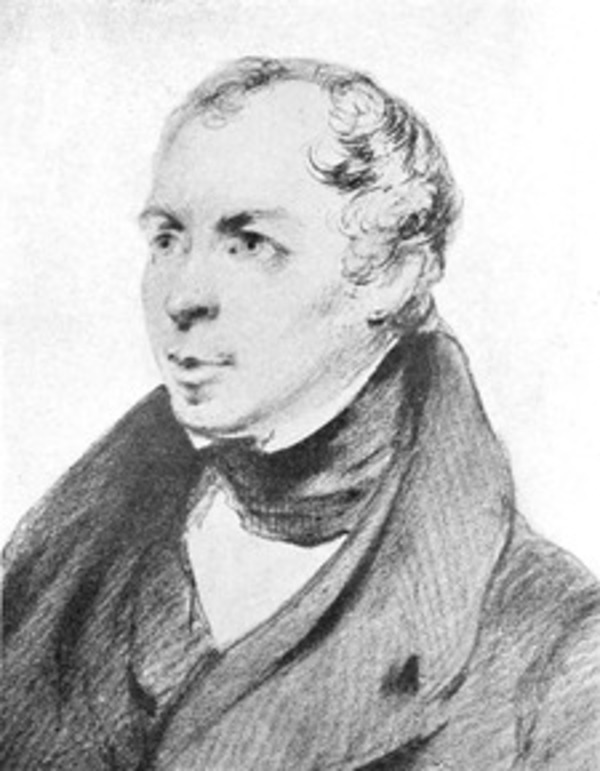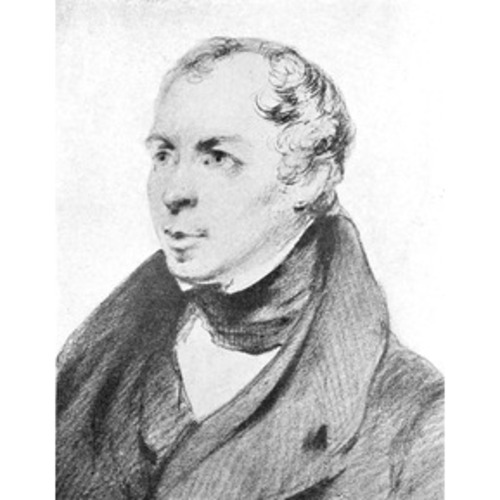
Source: Link
DRUMMOND, THOMAS, naturalist; b. c. 1790 in Perthshire, Scotland; d. 1835, probably in March, in Havana, Cuba.
Thomas Drummond may have been attracted to botany by his elder brother James, director of the Cork botanic garden in Ireland and an associate of the Linnean Society of London in 1810. Thomas was trained in the Dog Hillock nursery garden near Forfar, which was owned by George Don, retired director of the Royal Botanic Garden in Edinburgh, and he took over ownership of the business on Don’s death, about 1814. At this time he distributed collections of dried Scottish mosses entitled “Musci Scotici,” and they attracted the attention of William Jackson Hooker, who would be appointed regius professor of botany at the University of Glasgow in 1820. Drummond’s valuable information on plants was incorporated by Hooker in his Flora Scotica (London, 1821).
Hooker recommended Drummond as assistant naturalist to John Richardson* on Captain John Franklin*’s second expedition to the Arctic. After landing at New York in March 1825, the expedition advanced via Albany, Niagara Falls, and York (Toronto), then across lakes Huron and Superior to Fort William (Thunder Bay, Ont.), and finally on to Cumberland House (Sask.) with Drummond botanizing constantly en route. Drummond remained at Cumberland House to collect specimens while Franklin led the main party to the Arctic. From late August Drummond accompanied the Hudson’s Bay Company’s annual brigade to the Columbia River as far as “Upper House” (probably Henry House, Alta) on the Athabasca River, gathering plants according to an efficient schedule: “When the boats stopped to breakfast, I immediately went on shore with my vasculum, proceeding along the banks of the river, and making short excursions into the interior, taking care . . . to join the boats . . . at their encampment for the night. After supper, I commenced laying down the plants gathered in the day’s excursion, changed and dried the papers of those collected previously . . . till daybreak, when the boats started. I then went on board and slept till the breakfast hour, when I landed and proceeded as before.”
Drummond left the brigade in mid October 1825 and spent much of the winter in a hut built of spruce boughs on the Baptiste River, alone, without books, and subsisting on game he shot. The following spring, having met up with the annual brigade to York Factory (Man.), he was collecting mosses near Jasper House (Alta) when he encountered a large grizzly bear with young. “Growling and rearing herself on her hind feet . . . [she] advanced . . . to within the length of my gun from me,” he recorded. “Judge of my alarm . . . when I found that my gun would not go off! The morning had been wet, and the damp had been communicated to the powder.” At that juncture horsemen of the brigade arrived, and the bear made off. Thenceforth, Drummond rattled his vasculum to ward off bears. He botanized north of Jasper House until October 1826, when he accompanied the Columbia brigade across the Rockies, to determine the extent of changes in vegetation over the height of land. He returned immediately to winter at Edmonton House (Edmonton).
In the spring of 1827 Drummond travelled to Carlton House (near Batoche, Sask.); en route he and his companions “suffered much from snowblindness, . . . the dogs failed from want of food, we had to carry the baggage on our backs, and had nothing to eat for seven days.” At Carlton House he encountered David Douglas, probably an old botanical acquaintance. Douglas described his collection as “princely,” and told how Drummond “liberally showed me a few of the plants in his possession – birds, animals etc., in the most unreserved manner,” and even guided him to several habitats around the fort. In July Drummond accompanied Franklin’s party to York Factory on Hudson Bay, whence they were to sail for England. Before departing, however, he and others were nearly lost when their small boat was swept by a gale some 70 miles out into the bay [see David Douglas]. The expedition reached Portsmouth, England, on 11 Oct. 1827.
The following year Drummond became curator of the Belfast botanic garden, where he assembled 50 two-volume copies of exsiccata of American mosses, entitled “Musci Americani.” Hooker commented that “the whole . . . of North America has not been known to possess so many Mosses as Mr. Drummond [had] detected in this single journey.” Drummond was elected an associate of the Linnean Society in 1830. From 1831 to 1834 he botanized in the southern United States, principally down the Mississippi valley, around New Orleans, and in Texas. Though gravely ill with cholera, he dispatched from Texas hundreds of new specimens of plants and birds. After a brief stop in Florida, he sailed in 1835 to Havana and within weeks died there, probably of septicaemia.
Drummond was a quiet, intrepid, hard-working, and enthusiastic field naturalist, endowed, according to Richardson, with “an extreme quickness and acuteness of vision . . . [who] carried on under circumstances of domestic discomfort and difficulties, that would have quelled a meaner spirit.” Hooker asserted that he had “accomplished enough, by his zeal and researches, to secure to himself a lasting name throughout the botanical world.” Drummond’s collection of several thousand herbaceous plants from the Prairies and Rocky Mountains, together with those of Douglas, Richardson, and Archibald Menzies*, formed the basis for Hooker’s Flora Boreali-Americana . . . (2v., London, 1840). The insects, 150 birds, and 50 mammals collected by Drummond were used by Richardson in Fauna Boreali-Americana . . . (4 pts, London, 1829–37). Drummond’s name is borne by about a dozen plant species (including Potentilla drummondii from the Rockies), the moss genus Drummondia, and one mammal, the pack-rat Neotoma cinerea drummondii, assigned by Richardson.
Thomas Drummond described his work in 1825–27 with Sir John Franklin’s expedition in “Sketch of a journey to the Rocky Mountains and to the Columbia River in North America,” Botanical Miscellany (London), 1 (1830): 95–96, 178–219. W. J. Hooker published a letter Drummond wrote in the Rockies dated 26 April 1826 in “Account of the expedition under Captain Franklin, and of the vegetation of North America, in extracts of letters from Dr Richardson, Mr Drummond, and Mr Douglas,” Edinburgh Journal of Science, 6 (1827): 110–13. A portrait of Drummond executed by Sir Daniel MacNee is in the library of the Royal Botanic Gardens (London); it is reproduced in A. M. Coats, The quest for plants: a history of the horticultural explorers (London, 1969).
Royal Botanic Gardens, Director’s corr., Thomas Drummond, II, XLIV, LXI–LXIII. W. J. Hooker, “Notice concerning Mr. Drummond’s collections made chiefly in the southern and western parts of the United States,” Companion to the Botanical Magazine (London), 1 (1835): 21–26, 39–49, 95–101, 170–77; 2 (1836):60–64; “Notice concerning Mr. Drummond’s collections, made in the southern and western parts of the United States,” Journal of Botany (London), 1 (1834): 50–60, 183–201; “Obituary [Thomas Drummond],” Gardener’s Magazine, and Register of Rural and Domestic Improvement (London), new ser., 1 (1835): 608. DNB. S. W. Geiser, Naturalists of the frontier (2nd ed., Dallas, Tex., 1948), 55–78. S. D. McKelvey, Botanical exploration of the trans-Mississippi west, 1790–1850 (Jamaica Plain, Mass., 1955), 486–507. S. W. Geiser, “Naturalists of the frontier, Thomas Drummond,” Southwest Rev. (Dallas), 15 (1930): 478–512.
Cite This Article
Judith F. M. Hoeniger, “DRUMMOND, THOMAS,” in Dictionary of Canadian Biography, vol. 6, University of Toronto/Université Laval, 2003–, accessed December 29, 2025, https://www.biographi.ca/en/bio/drummond_thomas_6E.html.
The citation above shows the format for footnotes and endnotes according to the Chicago manual of style (16th edition). Information to be used in other citation formats:
| Permalink: | https://www.biographi.ca/en/bio/drummond_thomas_6E.html |
| Author of Article: | Judith F. M. Hoeniger |
| Title of Article: | DRUMMOND, THOMAS |
| Publication Name: | Dictionary of Canadian Biography, vol. 6 |
| Publisher: | University of Toronto/Université Laval |
| Year of publication: | 1987 |
| Year of revision: | 1987 |
| Access Date: | December 29, 2025 |



